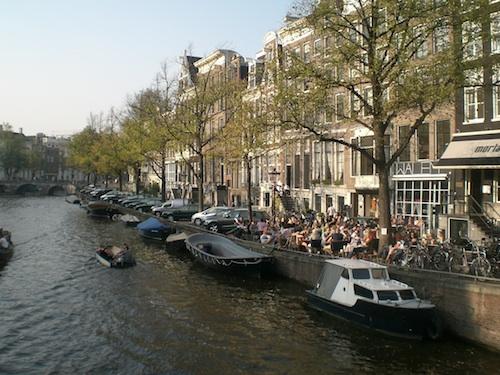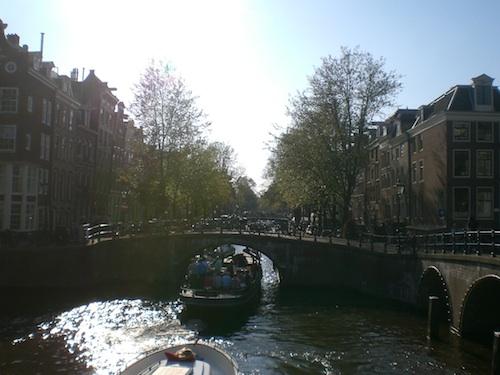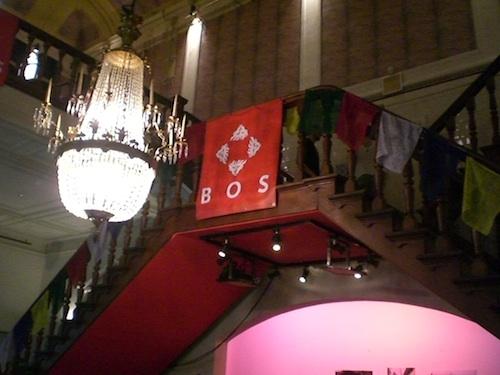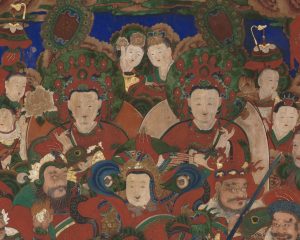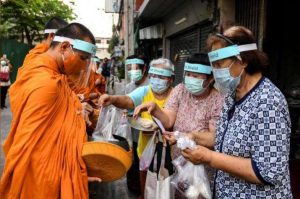Amsterdam’s red light district and apparent openness to brownies, liberal sex and hemp are a self-parody. They are a conscious joke (albeit an economically beneficial one) by the city’s tourism industry, a stereotype that it perpetuates in the name of two things that the Dutch have always been good at: commerce and trade. Amsterdam defies stereotypes because it knows what the Anglophone world projects onto it. The Red Light District itself is only several streets’ worth along the canals, with sex workers waiting for customers as they peer outside the narrow alleyways in their booths with red and pink lights.
It goes to show that Amsterdam is hardly representative of Dutch culture. There are also the intense and vibrant multicultural activities taking place in the city every day and night. No better example of this is the Buddhist Film Festival Europe (which I hereby call BFFE or the Festival), to where we went to review whatever films attracted our fancy there. This year marks the foundation’s sixth Festival.
The two venues at which the BFFE was held, Compagnietheater and De Balie, are sophisticated, niche, and lovely settings at which to socialize, hold meetings, and watch performances (they seem to be more catered for plays and theatre rather than movies). I like Compagnietheater’s lower floor café, and no café in Holland is complete without Indian Tonic. De Balie’s top floor lounge, which has a pseudo-classical feel (especially with the design of the staircase and galleries).
Buddhists at the BFFE?
The BFFE is closely affiliated with the Buddhist Broadcasting Foundation (BFF), and the former was advertised as an event of the latter. While not being itself a politically inclined body, the BFF supports some organizations that work for more or less activist causes, from the problems in Burma (which has undergone somewhat encouraging changes since Aung Sang Suu Kyi’s release). The attendees, sure enough, come from a hodgepodge host interested in animation, Japanese and Asian culture, and also people interested in Buddhism or Buddhist-related activism, such as the democracy movement in Burma or humanitarian activity in Inner and Central Asia. Many are interested in or practice in a western Buddhist sa?gha.
Notably, there were very few monks and nuns and the entire atmosphere of the festival was typically Dutch, by laypeople and for laypeople primarily. This is not necessarily a restrictive state of things, because the BFFE has managed to build a reasonably tight-knit community that has members that seem quite familiar with each other.
One amusing occasion was when I sat down to watch “Abraxas,” and there was a gentleman beside me who was sharing his thoughts about Buddhism with his female companion. “I’m not a Buddhist,” he said in response to her question, “I see it as more of a lifestyle and philosophy than a
religion.” I wanted to pull my hair out. I have heard this tired, worn out old trope time and again in the West, to the point that it has become a cliché about “Western” Buddhism: that we have no need for the religion, we just need the rationalism.
Needless to say, both Buddhist and non-Buddhist theologians have successfully defeated this assumption, for the message of Buddhist continuity is clear: to speak the language of Buddhism is to speak to and on behalf of a tradition, and that is true for the movement that was founded by the great, ineffable figure of ??kyamuni. Philosophy, majestic as it is, is only a miniscule part of the Buddha’s story of liberation for all beings.
The central theme of this year’s BFFE was to reframe the debate of Japanese spiritual consciousness. Several issues coalesced around the theme of Japanese spirituality. Of course, this theme arises during a period of economic, social, and even moral uncertainty for the West. First of all, the BFFE was the stereotype of the emotionless Japanese, or the Japanese who suppress their urge to grieve for the sake of maintaining face or the orderly social structure. It is true that Japanese society is unique in how it channels (or fails to channel) the insecurities, uncertainties, and negative emotions of its people.
It is also true that the New Orleans disaster, and many others in Western nations, have been contrasted with the extraordinary, exemplary conduct of the common Japanese person in 2011, during which there was barely a single instance of looting, theft, or crime in the earthquake and tsunami-struck zones. But this is the sad irony: when people show such moral fibre in the face of such agony and heartbreak, we see them as robots (an skim over some of the more thoughtless comments on online forums or news articles about the Japanese can be quite demoralizing). Why can we not celebrate the Japanese spirit of resilience – a typically Buddhist virtue in the face of sa?s?ra’s pain, I might add – as the best of humanity?
Cows, Zen, Countryside and Village
Film reviewing was not everything. I explored multicultural Amsterdam (Chinese and Indonesian food are assumed to be the same in Holland) for a full three days, but the only truly Dutch city I managed to visit was Alkmaar, which is also known as the cheese city of Holland. Here one could enjoy trulyDutch food, perhaps living proof that the charming simplicity of North European food is highly underrated, especially when preparation time takes slightly more time and complexity than expected.
Two kinds of food I enjoyed the most, both marvellously vegetarian and hence Buddhist-friendly: a special type of chips or fries called Raspatat (or Ras fries, in which the potato texture is softer on the inside while maintaining crunch on the outside), and a sublime ice cream made from pure milk, before any other process such as pasteurization. Simplicity was the watchword, with proper, top quality ingredients the main attraction.
I already itch to go back to the Netherlands again, although if I had a say in it I wouldn’t mind moving the BFFE to a quieter village. Unfortunately, aside from Rotterdam and perhaps The Hague, there are few cities in the country that can match the peaceful exuberance of proud Amsterdam, and where so many niche cultural events are hosted. The BFFE is no exception. I honestly could not imagine another festival that is not held at somewhere like the Compagnietheater and or De Balie, and I look forward to many more Dutch festivals where European Buddhists can enjoy the highly underrated jewels of Buddhist filmmaking, documentaries, journalism and animation.
